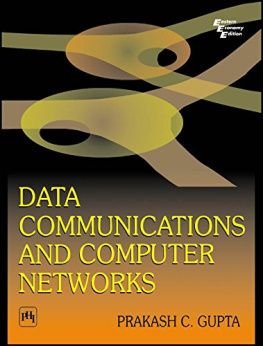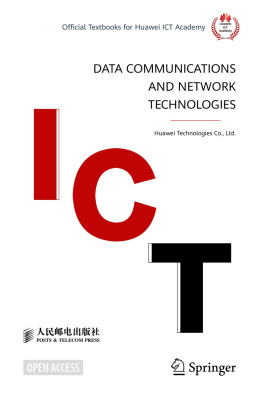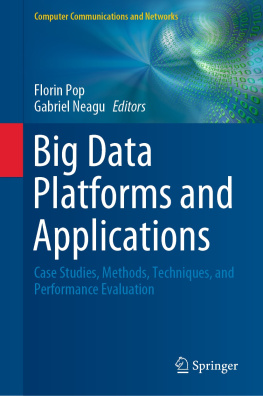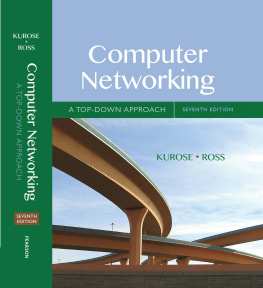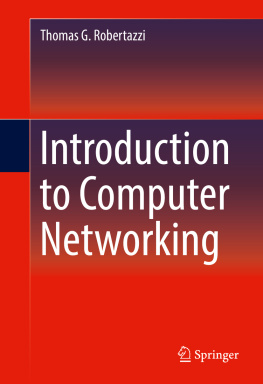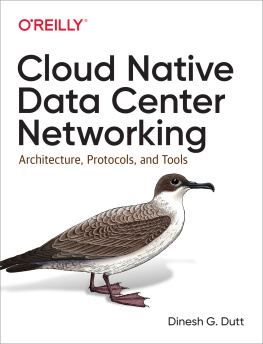Prakash C. Gupta - Data Communications and Computer Networks
Here you can read online Prakash C. Gupta - Data Communications and Computer Networks full text of the book (entire story) in english for free. Download pdf and epub, get meaning, cover and reviews about this ebook. year: 2013, publisher: PHI Learning, genre: Computer. Description of the work, (preface) as well as reviews are available. Best literature library LitArk.com created for fans of good reading and offers a wide selection of genres:
Romance novel
Science fiction
Adventure
Detective
Science
History
Home and family
Prose
Art
Politics
Computer
Non-fiction
Religion
Business
Children
Humor
Choose a favorite category and find really read worthwhile books. Enjoy immersion in the world of imagination, feel the emotions of the characters or learn something new for yourself, make an fascinating discovery.
- Book:Data Communications and Computer Networks
- Author:
- Publisher:PHI Learning
- Genre:
- Year:2013
- Rating:3 / 5
- Favourites:Add to favourites
- Your mark:
Data Communications and Computer Networks: summary, description and annotation
We offer to read an annotation, description, summary or preface (depends on what the author of the book "Data Communications and Computer Networks" wrote himself). If you haven't found the necessary information about the book — write in the comments, we will try to find it.
Primarily intended as a text for undergraduate courses in Electronics and Communications Engineering, Computer Science, IT courses, and Computer Applications, this up-to-date and accessible text gives an indepth analysis of data communications and computer networks in an easy-to-read style. Though a new title, it is a completely revised and fully updated version of the authors earlier book Data Communications. The rapid strides made during the last decade in the fields of data communication and networking, and the close link between these two subjects have prompted the author to add several chapters on computer networks in this text.
The book gives a masterly analysis of topics ranging from the principles of data transmission to computer networking applications. It also provides standard protocols, thereby enabling to bridge the gap between theory and practice. Whats more, it correlates the network protocols to the concepts, which are explained with the help of numerous examples to facilitate students understanding of the subject.
This well-organized text presents the latest developments in the field and details current topics of interest such as Multicasting, MPLS, IPv6, Gigabit Ethernets, IPSec, SSL, Auto-negotiation, Wireless LANs, Network security, Differentiated services, and ADSL.
Besides students, the practicing professionals would find the book to be a valuable resource.
The book, in its second edition introduces a full chapter on Quality of Service, highlighting the meaning, parameters and functions required for quality of service.
This book is recommended in Kaziranga University, Nagaland, IIT Guwahati, Assam and West Bengal University of Technology (WBUT), West Bengal for B.Tech.
Key Features
The book is self-contained and student friendly.
The sequential organization lends flexibility in designing courses on the subject.
Large number of examples, diagrams and tables illustrate the concepts discussed in the text.
Numerous exercises (with answers), a list of acronyms, and references to protocol standards.
**
About the AuthorPrakash C. Gupta is Head, Department of Information Technology, Maharashtra Institute of Technology, Pune. Earlier he was Head, Data Networks, Reliance Infocomm Ltd.Also, a recipient of Gold Medal, from the Department of Telecom, Ministry of Communications, Prakash C. Gupta was one of the panellist in World Telecom 2000 held in Geneva. He has a rich and varied experience in research, engineering and operating telecommunications and data networks.
Prakash C. Gupta: author's other books
Who wrote Data Communications and Computer Networks? Find out the surname, the name of the author of the book and a list of all author's works by series.

